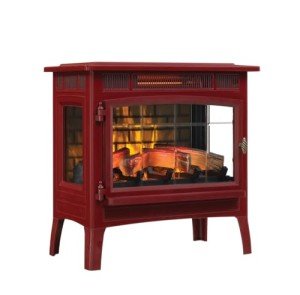The Comprehensive Guide to Fireplaces and Stoves
Fireplaces and stoves have been essential to human civilization for centuries, serving as a source of warmth, light, and convenience. These appliances are available in different forms and have actually progressed for many years, accommodating diverse choices and technological advancements. This post supplies a helpful summary of fireplaces and stoves, highlighting their types, advantages, maintenance ideas, and installation factors to consider.
Kinds of Fireplaces
The world of fireplaces is rich and differed. Here are the most typical types:
Wood-Burning Fireplaces:
- Traditional and charming.
- Needs seasoned wood and routine maintenance.
- Produces an enjoyable fragrance and crackling noise.
Gas Fireplaces:
- Offer convenience and ease of use.
- Readily available in vented and vent-free options.
- More efficient and cleaner than wood-burning options.
Electric Fireplaces:
- Provide atmosphere without the need for a chimney.
- Easy to use with remote control options.
- Can be utilized as an additional heat source.
Pellet Stoves:
- Use compressed wood pellets as fuel.
- Extremely efficient and eco-friendly.
- Typically geared up with thermostats for temperature control.
Ethanol Fireplaces:
- Utilize bioethanol fuel, making them portable.
- Do not require venting, which permits flexible placement.
- Produce a reasonable flame with minimal smoke.
Outdoor Fireplaces:
- Designed for outdoor settings; can be wood or gas-burning.
- Great for amusing and enhancing yard looks.
- Often built from stone, brick, or metal.
Benefits of Fireplaces and Stoves
Including a fireplace or range into a home uses many benefits:
- Aesthetic Appeal: Fireplaces function as striking focal points in any room, including heat and character to home decoration.
- Increased Property Value: Homes with functional fireplaces tend to have higher resale values.
- Energy Efficiency: Modern fireplaces and stoves are created to be more energy-efficient, which can lead to decreased heating expenses.
- Backup Heating Source: In case of power interruptions, wood-burning and gas fireplaces can work as essential heating sources.
- Versatile Heating Solutions: Different kinds of fireplaces cater to various heating needs and lifestyles, from comfortable ambiance to efficient heating.
| Kind of Fireplace/Stove | Fuel Source | Efficiency Rating | Upkeep Level |
|---|---|---|---|
| Wood-Burning | Wood | Moderate | High |
| Gas | Natural gas/LP | High | Low |
| Electric | Electricity | High | Really Low |
| Pellet | Wood pellets | High | Moderate |
| Ethanol | Bioethanol | Moderate | Low |
| Outdoor | Wood or gas | Moderate | Differs |
Maintenance Tips
Proper upkeep extends the life of fireplaces and stoves, making sure safety and efficiency. Here are some essential pointers:
Regular Cleaning:
- Wood-burning fireplaces ought to be cleaned up after a complete season of use to remove soot and creosote.
- Gas fireplaces need regular assessment of the burner and vents.
Regular Inspections:
- Have chimney sweeper perform annual examinations to identify clogs or structural damage.
- Examine the seals and gaskets on gas systems to avoid leakages.
Fire Safety:
- Install smoke and carbon monoxide gas detectors in homes with fireplaces or stoves.
- Keep a fire extinguisher near the fireplace or stove for emergency situations.
Usage Quality Fuel:
- For wood-burning systems, always use skilled wood; prevent dealt with or painted wood.
- When utilizing pellets, ensure they are saved correctly to prevent moisture absorption.
Manage Airflow:
- Keep vents and ducts clear to promote efficient ventilation and airflow.
- Consider utilizing glass doors or screens to reduce debris and ash in the living area.
Setup Considerations
Installing a fireplace or range needs mindful factor to consider of several aspects:
Location:
- Choose a place that permits for appropriate clearance and ventilation.
- Think about the design of your home and the benefit of natural heat distribution.
Building Codes and Permits:
- Check local policies relating to installations and required authorizations.
- Engage a professional to guarantee compliance with safety requirements.
Fuel Type:
- Evaluate your fuel choices based upon schedule, cost, and environmental effect.
- If going with gas, ensure existing gas lines can accommodate the brand-new device.
Ventilation:
- Proper venting is important for security and performance, particularly for gas and wood-burning units.
- Speak with a professional to identify the very best venting option.
Aesthetic Consideration:
- Select a design that matches your home's interior.
- Think about mantels, surround materials, and colors that match your decoration.
FAQs
What is the very best kind of fireplace for heating?
Gas fireplaces are usually more efficient for heating, while wood-burning fireplaces offer more ambient warmth.
How frequently should I clean my fireplace?
Wood-burning fireplaces should be cleaned at least when a year, while gas fireplaces need less regular attention depending upon use.
Can I install a fireplace myself?
While some homeowners may attempt DIY installation, it is suggested to hire an expert to make sure security and compliance with building codes.
Are electric fireplaces efficient?
Yes, electric fireplaces are extremely efficient and can serve as efficient extra heating sources, specifically in smaller sized areas.
What is the lifespan of a fireplace?
The life expectancy of a fireplace differs depending upon the product, type, and maintenance; however, a well-kept wood-burning fireplace can last over 30 years.
Fireplaces and stoves remain classic functions in homes, using heat and ambiance. Understanding the different types, benefits, and maintenance requirements can assist homeowners make notified decisions about setup and care. With internet site and routine upkeep, these appliances can improve both the convenience and value of a home for several years to come.

